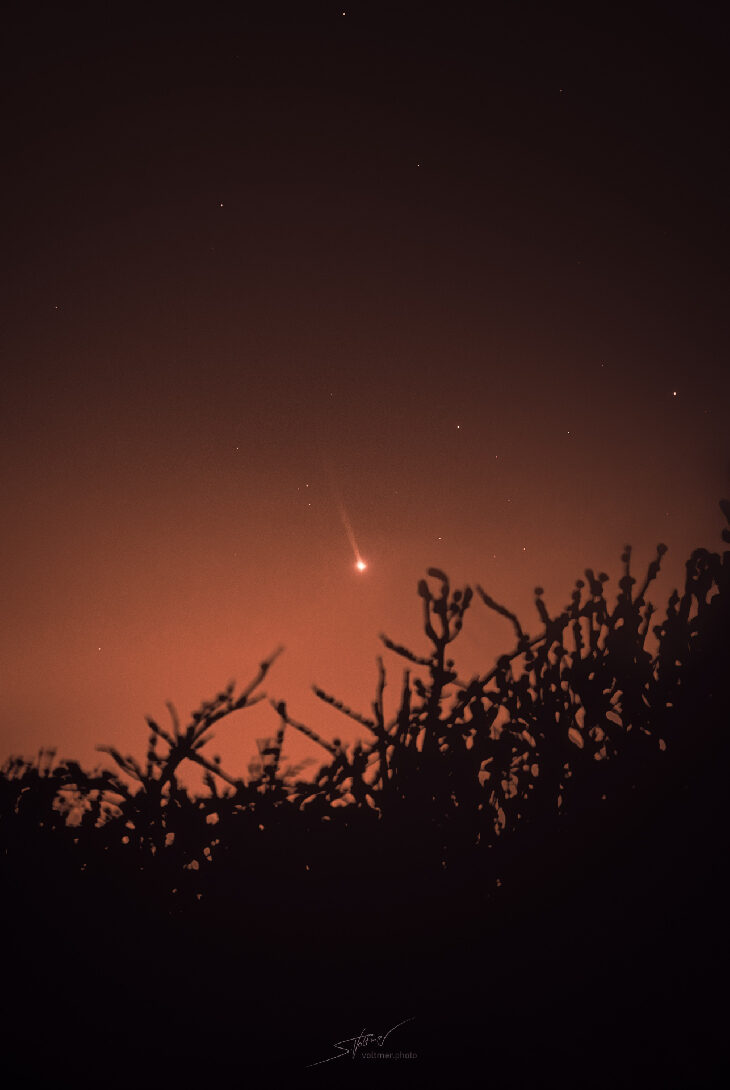
Taken by Dr. Sebastian Voltmer on April 12, 2023 @ Spicheren, France
Details:
This is NOT a comet, not even a shooting-star, but the planet Mercury, which is currently visible just after sunset. The solar wind and micro-meteorites eject sodium atoms from Mercury’s surface. This creates a yellow-orange tail of sodium gas that is around 24 million kilometers long. I captured this stacked CCD image during the Yuri's Night 2023 from my backyard using a 135mm lens and a 589 nanometer filter tuned to the yellow glow of sodium.
Photographer's website:
https://www.instagram.com/sebastianvoltmer
First predicted in the 1980s, Mercury's tail was discovered in 2001. The gaseous plume is made of many elements from Mercury's rocky surface, not only sodium. Sodium, however, dominates the scattering of sunlight and gives the tail its striking yellow hue.
People watching Mercury climb up the evening sky this month may be wondering "why didn't I see a tail?" Answer: A special filter is required. "I used a 589 nanometer filter tuned to the yellow glow of sodium," says Voltmer. "Without such a filter, Mercury's tail is almost invisible to the naked eye."
Mercury's tail waxes and wanes in brightness as it orbits the sun. The predictable pattern is shown in this movie from NASA's MESSENGER spacecraft, which spent years observing Mercury's tail from close range:
For reasons having to do with the Doppler shift of sodium absorption lines in the solar spectrum, Mercury's tail is most luminous when the planet is ±16 days from perihelion (closest approach to the sun).
This means the tail's maximum luminosity is only a few days away. Mercury will be 16 days past perihelion on Monday, April 17th, located in the sunset sky almost directly below Venus. If you have a sodium filter, take a look!
more images: from Nicolae-Adrian Corlaci of Bucharest, Romania; from Paul Robinson near Memphis, TN



awesome.